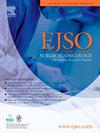Validation of a simulator for oncoplastic breast conserving surgery
IF 3.5
2区 医学
Q2 ONCOLOGY
引用次数: 0
Abstract
Background
Therapeutic Mammoplasty (TM) is increasingly becoming the standard of care, especially for patients with large tumor-to-breast volume ratios. The wider dissemination of oncoplastic skills warrants systems for the acquisition and assessment of safe skills. To date, TM simulations have not been developed for the acquisition or assessment of oncoplastic skills. This study aimed to design, develop, and validate a synthetic TM simulator for specialist surgical training and assessment.
Methods
A prospective, observational, and survey-based study. Breast surgeons collaborated with designers to construct a TM simulator. A modified Delphi approach was used to create a Competency Assessment Tool (CAT). Surgeons with varying operative experience performed simulated vertical scar TM. Procedures were videotaped (blinded, pseudo-anonymized), subsequently reviewed, and independently rated against CAT by three experts. Specimen radiographs and volumetric analysis were performed to assess specimen weight(g), volume(cm3), and adequacy of resection, derived as a percentage of deviation in uniformity around a 10 mm margin.
Results
Thirty participants were recruited (10 consultants, 10 senior registrars (ST7-8), and 10 junior registrars (ST3-6)). Video-based rating scores (0-40) were significantly greater in consultants (median(IQR) = 34.0(30.5–38.0)) than in senior registrars (median(IQR) = 30.0(28.0–33.0)) and junior registrars (median(IQR) = 28.0(25.8–30.3)). The CAT scores varied significantly based on operator grade (p < 0.05). The inter-rater reliability showed fair agreement (κ = 0.379). Specimens resected by consultants had significantly greater weight and volume (p < 0.05). The consultants demonstrated the greatest uniformity in resection accuracy (p < 0.05).
Conclusion
A novel oncoplastic simulator was developed to practice and assess TM skills. Video-based ratings and end-product assessments differentiated experts from novice surgeons, suggesting construct validity.
肿瘤保乳手术模拟器的验证
背景:治疗性乳房成形术(TM)正日益成为治疗的标准,特别是对于肿瘤与乳房体积比大的患者。肿瘤治疗技能的广泛传播需要建立获取和评估安全技能的系统。迄今为止,还没有开发出用于获取或评估肿瘤技能的TM模拟。本研究旨在设计、开发和验证一个用于专科外科训练和评估的综合TM模拟器。方法前瞻性、观察性、基于调查的研究。乳房外科医生与设计师合作建造了一个TM模拟器。采用改进的德尔菲法创建能力评估工具(CAT)。具有不同手术经验的外科医生进行了模拟垂直疤痕TM。对程序进行录像(盲法、伪匿名),随后由三名专家进行审查,并对CAT进行独立评级。进行标本x线片和体积分析,以评估标本重量(g)、体积(cm3)和切除的充分性,得出均匀度在10 mm左右的偏差百分比。结果共招募了30名参与者(10名咨询师,10名高级注册员(ST7-8), 10名初级注册员(ST3-6))。咨询师(中位数(IQR) = 34.0(30.5-38.0))的基于视频的评分分数(0-40)明显高于高级注册商(中位数(IQR) = 30.0(28.0 - 33.0))和初级注册商(中位数(IQR) = 28.0(25.8-30.3))。CAT评分根据操作人员等级有显著差异(p <;0.05)。信度一致性较好(κ = 0.379)。顾问切除的标本重量和体积明显更大(p <;0.05)。咨询师在切除精度上表现出最大的一致性(p <;0.05)。结论开发了一种新型的肿瘤成形术模拟器来练习和评估TM技能。基于视频的评分和最终产品评估将专家与新手外科医生区分开来,表明结构效度。
本文章由计算机程序翻译,如有差异,请以英文原文为准。
求助全文
约1分钟内获得全文
求助全文
来源期刊

Ejso
医学-外科
CiteScore
6.40
自引率
2.60%
发文量
1148
审稿时长
41 days
期刊介绍:
JSO - European Journal of Surgical Oncology ("the Journal of Cancer Surgery") is the Official Journal of the European Society of Surgical Oncology and BASO ~ the Association for Cancer Surgery.
The EJSO aims to advance surgical oncology research and practice through the publication of original research articles, review articles, editorials, debates and correspondence.
 求助内容:
求助内容: 应助结果提醒方式:
应助结果提醒方式:


